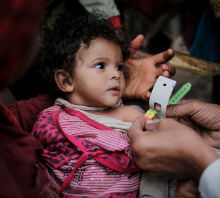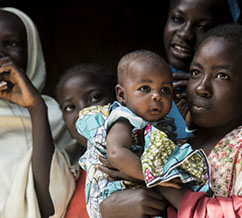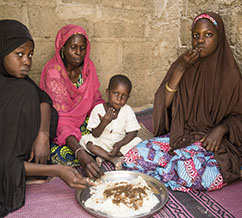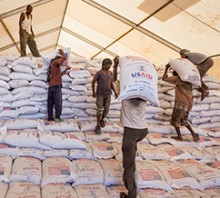Speeches Shim
In September, NOAA reported an increased likelihood that a La Niña climatic event could develop by late 2017. Historically, La Niña events are associated with below-average October-to-December deyr rains over the Horn of Africa, according to FEWS NET. Anticipated below-average seasonal rains in late 2017 would mark the fourth consecutive season of below-average rainfall in many areas of the region.
Ongoing conflict could hinder staple crop harvests in Cameroon, despite forecasts of favorable agroclimatic conditions, according to the UN Food and Agriculture Organization (FAO). To respond to food insecurity in Cameroon’s Far North Region, USAID/FFP recently contributed an additional $5 million to the UN World Food Program (WFP), allowing the provision of full food rations to refugees in the region.
On September 21, USAID Administrator Mark Green announced approximately $575 million in new humanitarian funding to support emergency response activities in Nigeria, Somalia, South Sudan, and Yemen—the four conflict-affected countries facing severe food insecurity and malnutrition crises—as well as neighboring countries hosting refugees fleeing those crises.
Post-gu seasonal assessments indicate that while Famine—IPC 5—levels of acute food insecurity have been averted in Somalia, the risk of Famine persists through December for internally displaced persons (IDPs) and other vulnerable populations in the worst-affected areas of Somalia.4 In addition, an estimated 3.1 million people are expected to face Crisis—IPC 3—or Emergency—IPC 4—levels of acute food insecurity through December, with an estimated 6.2 million people likely to require humanitarian assistance, according to the USAID-funded Famine Early Warning Systems Network (FEWS NET) and Food Security and Nutrition Analysis Unit–Somalia (FSNAU).
The United States is deeply concerned about the risk of famine in northeastern Nigeria, Somalia, South Sudan and Yemen. We are the single largest donor of humanitarian assistance for these countries, providing lifesaving aid to avert famine and help people in need. U.S. assistance includes emergency food, nutrition, water, shelter, healthcare, sanitation, hygiene services and protection. The United States also provides humanitarian assistance to refugees from these four countries. On September 21, on the margins of the 72nd United National General Assembly, USAID Administrator Mark Green announced more than $575 million in additional U.S. humanitarian assistance for the four countries at risk of famine.





Comment
Make a general inquiry or suggest an improvement.